Hero Overview is a series that introduces readers to the Heroes of the Storm. This time, we’re going to be talking about Ana, the support sniper from the Overwatch universe.
Role: Ranged Support
Universe: Overwatch
Bio:
During the Omnic Crisis, Egypt was one of the nations hit the hardest, as it lost nearly its entire military force in skirmishes against the rampaging robots. As a result of these heavy casualties, the nation was forced to rely primarily on a small battalion of elite snipers, a battalion that included a promising young woman named Ana Amari.
Naturally talented at sniping, with next-level decision-making and instincts, Ana quickly distinguished herself over the rest of her compatriots. Noticing her skill, the United Nations quickly recruited her as one of the first members of the newly formed Overwatch. Coordinating with Jack Morrison (the organization’s Strike-Commander) and Gariel Reyes (Overwatch’s overall commander), Ana Amari led many successful operations against the Omnics, and was an instrumental part in their defeat.
With the Omnic Crisis in the past, Overwatch turned its eyes to a wider variety of threats, both human and omnic in nature. In her position as second-in-command of the Overwatch Strike Force, Ana led many successful missions, and became renowned for her skill as a sniper and a leader. It was also during this time that Ana had a daughter, Fareeha (who is more commonly known as Pharah), who she imbued with all of her courage and honor.
For many years, Ana served Overwatch, but then, one fateful day, everything changed. It was a fairly routine mission—Talon had taken several innocent scientists hostage, and Overwatch was called in to rescue them. At first, the mission proceeded according to plan, but then, an unknown Talon sniper showed up and began picking off the Overwatch agents one by one. Taking careful aim, Ana shot the sniper’s mask off—and was shocked to see that the sniper was Amélie Lacroix, the former wife of an Overwatch agent.
Stunned by this revelation, Ana hesitated, and Amélie (or Widowmaker, as she is now known) shot Ana in the eye. After this incident, Ana was assumed dead—however, she actually survived the encounter, albeit with the loss of her eye and, more importantly, her conviction to fight. She was too old for this kind of work, she decided, and instead chose to go into hiding.
This retirement didn’t last long, however, for in the aftermath of Overwatch’s fall, a whole host of new threats came out of the framework and threatened the safety of the world. Realizing that she couldn’t just stand to the side and let this happen, Ana rejoined the fight, under the alias of the bounty hunter ‘Shrike’.
Operating out of an abandoned necropolis in the Egyptian desert, Ana battled the forces of Talon alone until one day, she ran into Jack Morrison (who was now the vigilante Soldier: 76) at a terrorist compound. Remembering how well they used to work together, the two united, and have been working together ever since.
Now, Ana has traveled to the Nexus, where she will protect those who cannot protect themselves and dish out vengeance for those who have fallen.
Abilities:
Ana’s trait is Shrike. Whenever she damages a non-Structure enemy with a basic attack, she deals an additional small amount of damage to that enemy over the next 5 seconds. This damage-over-time effect stacks up to 5 times, and is refreshed every time she attacks that enemy. Most of Ana’s damage comes from Shrike, as her basic abilities and auto-attacks don’t do much damage in and of themselves.
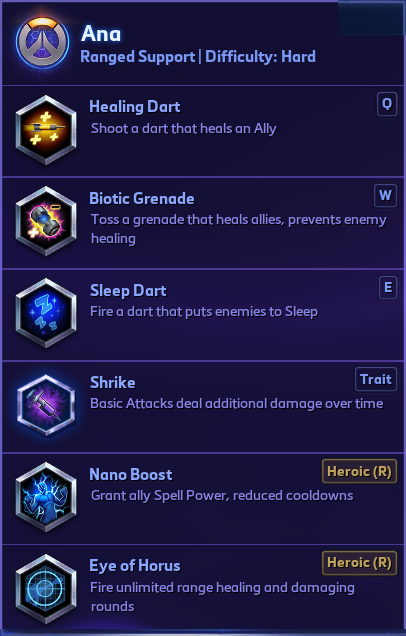
Ana’s first basic ability is Healing Dart. Ana fires a dart out of her rifle that travels in a straight line, healing the first allied Hero hit for a moderate amount of damage. This ability only has a 2 second cooldown, but it is somewhat hard to hit, so the amount of healing Ana will be able to dish out is completely dependent on how good her aim is.
Biotic Grenade, Ana’s second basic ability, throws a grenade at small area. Allies hit by the grenade are healed for a small amount and receive 25% increased healing for 3 seconds, while enemies hit by the grenade take a small amount of damage and cannot be healed for 2 seconds. This ability is great for quickly healing up your team, but it can also be used to deny a low-health enemy hero the healing he needs to survive.
Ana’s final basic ability is Sleep Dart, which fires a projectile that puts the first enemy Hero it hits to sleep for 3 seconds. This is like a stun, but if the sleeping hero takes any damage, they’ll instantly wake up. Unless you have a very coordinated team, Sleep Dart is unlikely to do much in a team-fight, but it’s great for keeping pesky dive heroes like Genji or the Butcher off your back while you’re healing up your friends.
Nano Boost is Ana’s first ultimate, and while it doesn’t work quite the same as it does in Overwatch, it is still pretty close. With Nano Boost, Ana restores a large amount of mana to a targeted friendly Hero, increases their Spell Power by 30% and causes their basic abilities to cool down 150% faster. Nano Boost works best when targeting caster heroes such as Kael’thas or ability-based dive characters like Genji, unlike Lieutenant Morales’ Stim Drone, which is designed around auto-attack heroes.
Ana’s second ultimate is Eye of Horus, which turns the support into a stationary sniper with eight shots that have unlimited range. These specialized shots hit the first Hero or enemy Structure in their path, healing allies for a large amount and damaging enemies for a moderate amount. Damage done is halved against enemy Structures. This ability is great for quickly healing up an ally who’s being ambushed, or for taking down low-health enemies as they attempt to flee.
Gameplay:
Ana is a Ranged Support Hero who puts out some of the highest burst healing in the game. At level 1, Healing Dart puts out 250 healing every two seconds, which is much better than similar burst healers such as Uther (who heals for 360 every 12 seconds). When combined with the healing bonus from Biotic Grenade, Ana’s burst healing goes up even more, which allows her to single-handedly heal allies through all but the most dangerous situations.
Despite being able to keep her allies alive with all this burst healing, Ana can only heal herself with the Biotic Grenade (which only restores a small amount of health on its own and has a twelve second cooldown). As a result, playing Ana is all about positioning properly, because if she gets caught out, she can quickly get taken down. Ana has Sleep Dart to defend her in these instances, but it’s a bit unreliable, as it is a very slow skill shot that can be completely nullified if your teammates aren’t paying attention. As a result, Ana’s best chance of survival is using her long range to heal her allies from the cover of nearby buses.
As for her heroic abilities, they are both very useful in specific situations. If Ana has a teammate who can dish out a lot of spell damage (such as Li-Ming or Malthael), Nano Boost is a very powerful ability. On the other hand, if there aren’t any good targets for Nano Boost (or you don’t have the communication to pull the ability off properly), then Eye of Horus is the better choice, as it allows you to heavily impact the game without having to rely on one of your teammates.
As far as talents go, Ana doesn’t have any clear-cut builds, and none of her talents have incredibly strong synergies with each other. That being said, nearly all of her talents are very strong on their own, so it’s really up to each individual player to decide how they want to play.
Ana is at her best when working with a team that can keep her protected in the back-line. As a result, it is often a good idea to run a pair of tanks with her, as they can help keep her safe while she heals them up with Healing Dart and Biotic Grenade. In addition, if she wants to use her Nano Boost ultimate, she’ll want a Hero who puts out a lot of spell damage, such as the characters mentioned above. Finally, if the player using Ana is somewhat inexperienced at the character, having large-bodied teammates (such as Diablo or Cho’gall) can really help to maximize the healing Ana’s putting out.
As far as counters to Ana go, any kind of dive hero (such as Genji or Illidan) works very well against her. There’s always the risk of being put to sleep, but if you can bait out and dodge the skill shot—which generally isn’t too hard—you’re free to dish out as much damage as you want for the 14 seconds until Sleep Dart comes back off cooldown. Similarly, Ana is weak against stealth assassins like Nova, as they can often burst her down before she even knows they’re there.
Despite these potential weaknesses, Ana is still a very strong support, so I strongly suggest picking her up if you’re looking for a new healer to play. Thanks for reading, and I’ll see you in the Nexus.

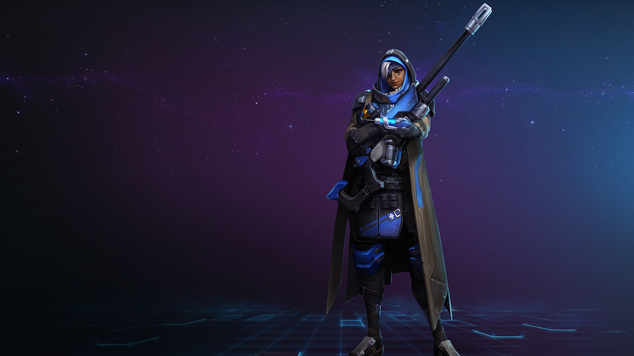

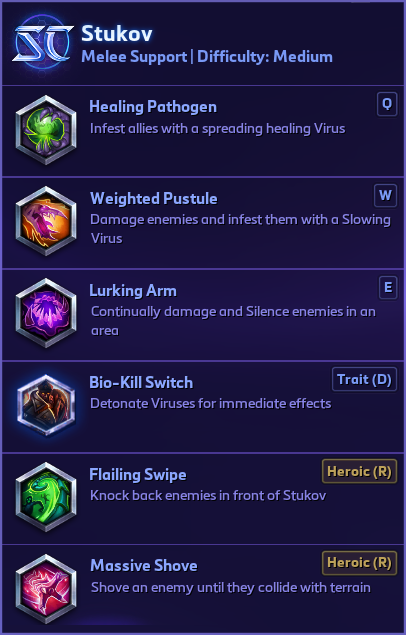

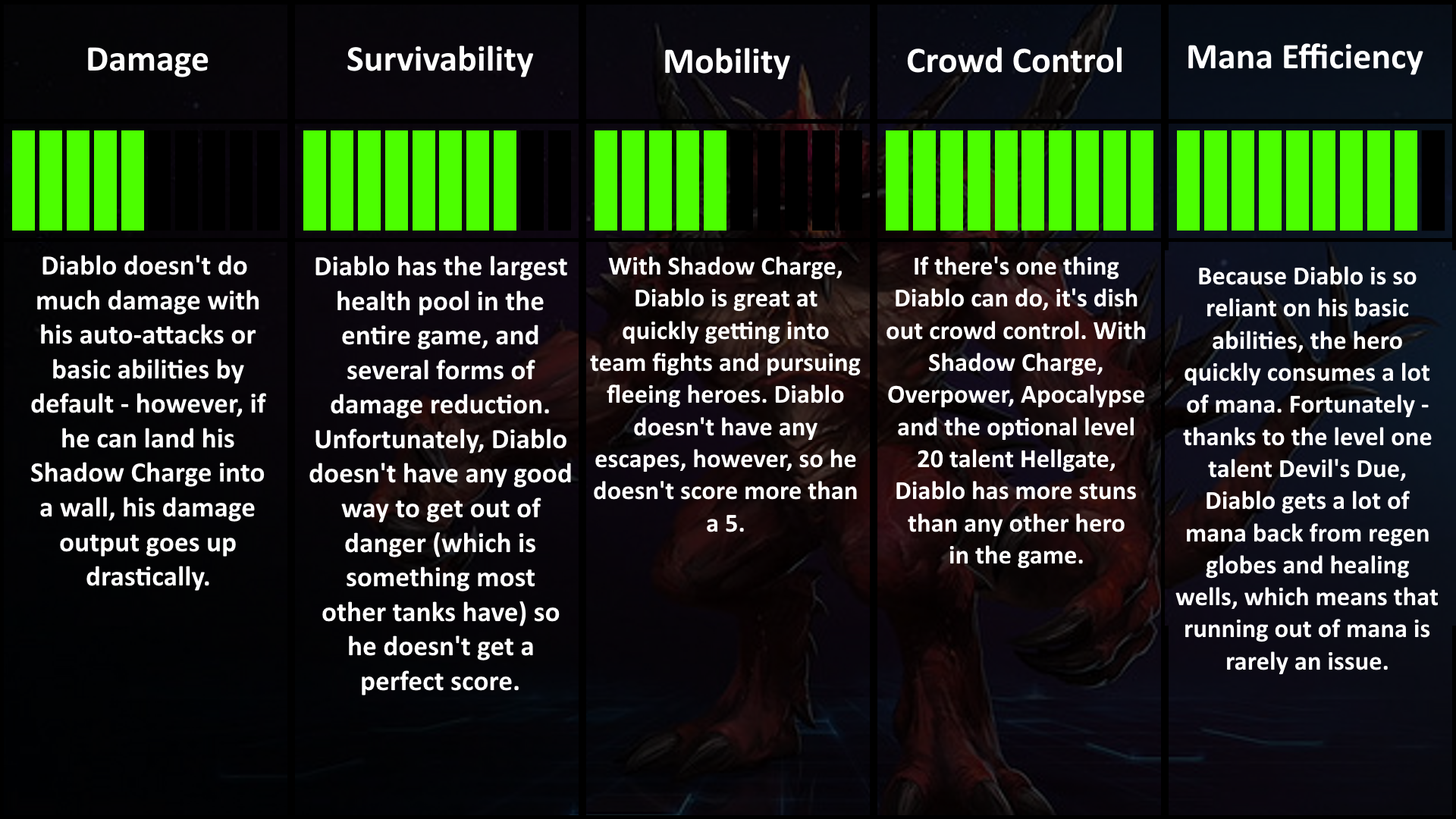

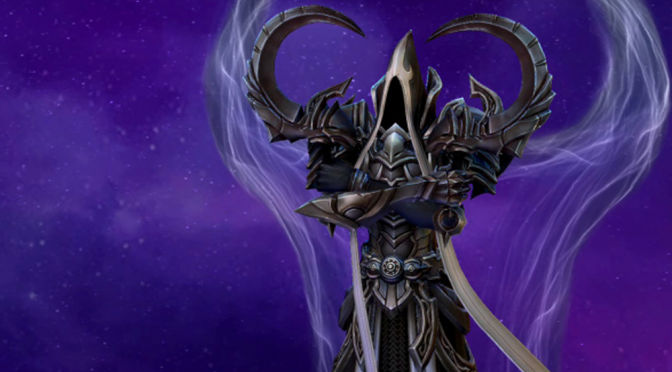
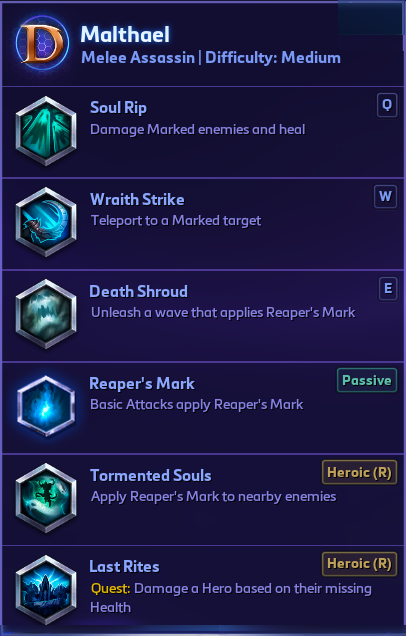 A debuff applied by the hero’s basic attacks on non-structure targets, Reaper’s Mark deals 2.5% of the target’s health every second for four seconds and reveals the target for that time. Much of Malthael’s kit revolves around applying Reaper’s Mark to enemies, so keeping the trait active for as much time as possible is incredibly important.
A debuff applied by the hero’s basic attacks on non-structure targets, Reaper’s Mark deals 2.5% of the target’s health every second for four seconds and reveals the target for that time. Much of Malthael’s kit revolves around applying Reaper’s Mark to enemies, so keeping the trait active for as much time as possible is incredibly important.
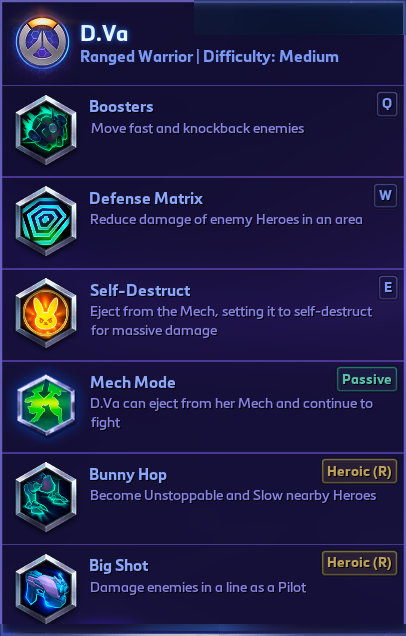 and Pilot Mode. At the beginning of a match, D.Va will be in Mech Mode, which grants her the ability to move while auto-attacking and makes her auto-attacks affect enemies in an area. When she is ‘killed’ in Mech Mode, D.Va leaps from her mech and transitions to Pilot Mode.
and Pilot Mode. At the beginning of a match, D.Va will be in Mech Mode, which grants her the ability to move while auto-attacking and makes her auto-attacks affect enemies in an area. When she is ‘killed’ in Mech Mode, D.Va leaps from her mech and transitions to Pilot Mode.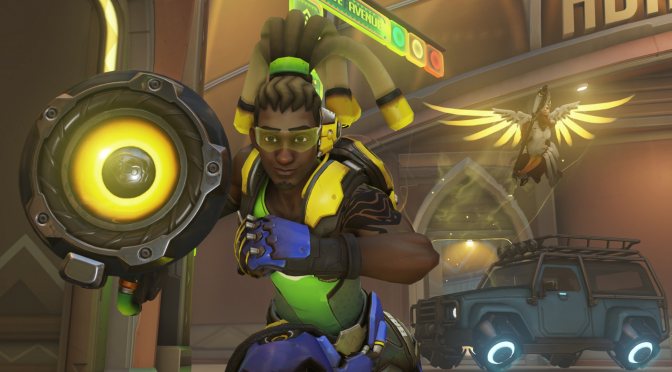

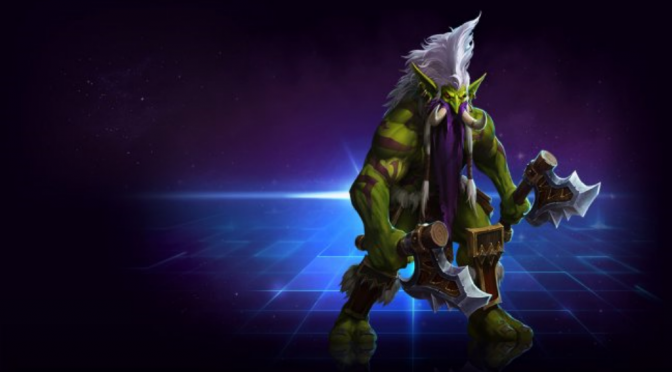
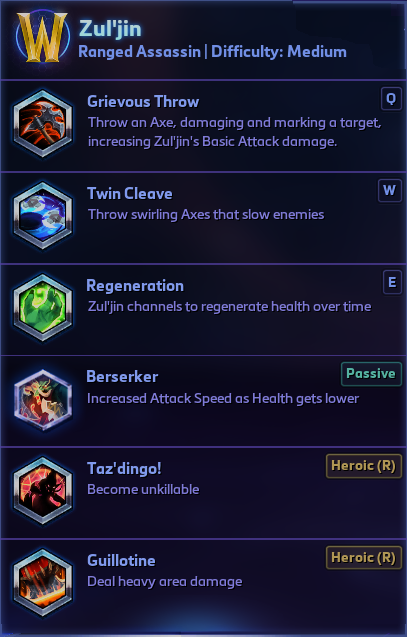
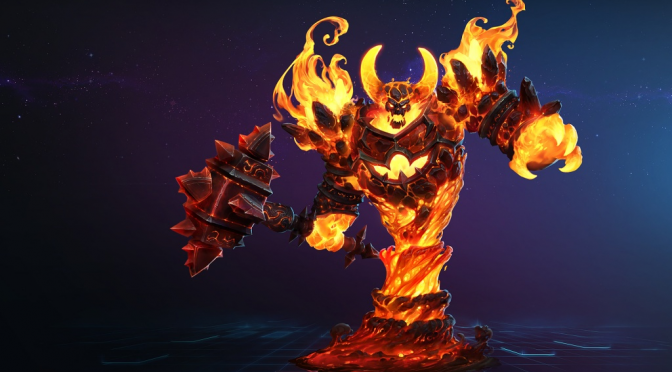

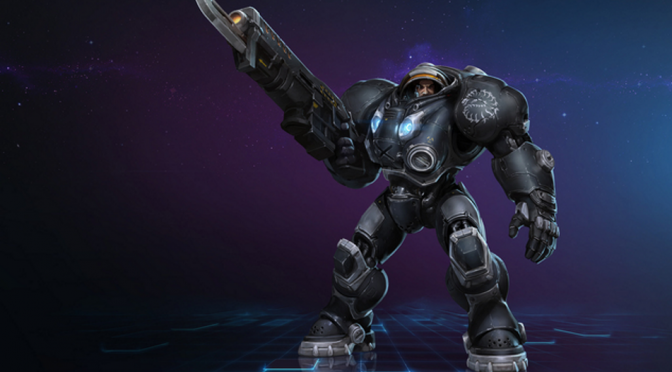
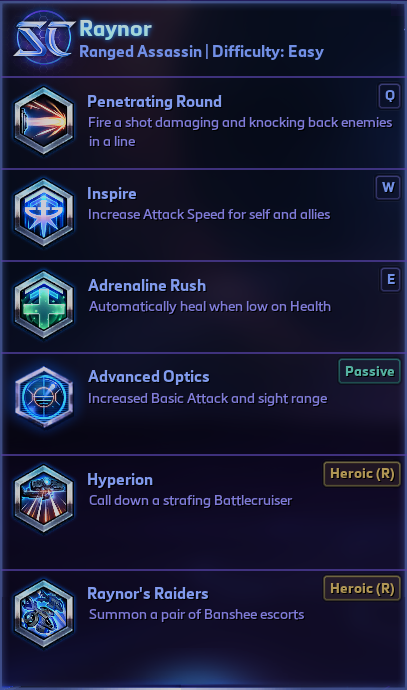 Penetrating Round, which deals heavy damage and knocks away all enemies it hits. This attack is good at keeping melee focused heroes pushed back as he pours hot lead into them with his auto-attacks.
Penetrating Round, which deals heavy damage and knocks away all enemies it hits. This attack is good at keeping melee focused heroes pushed back as he pours hot lead into them with his auto-attacks.